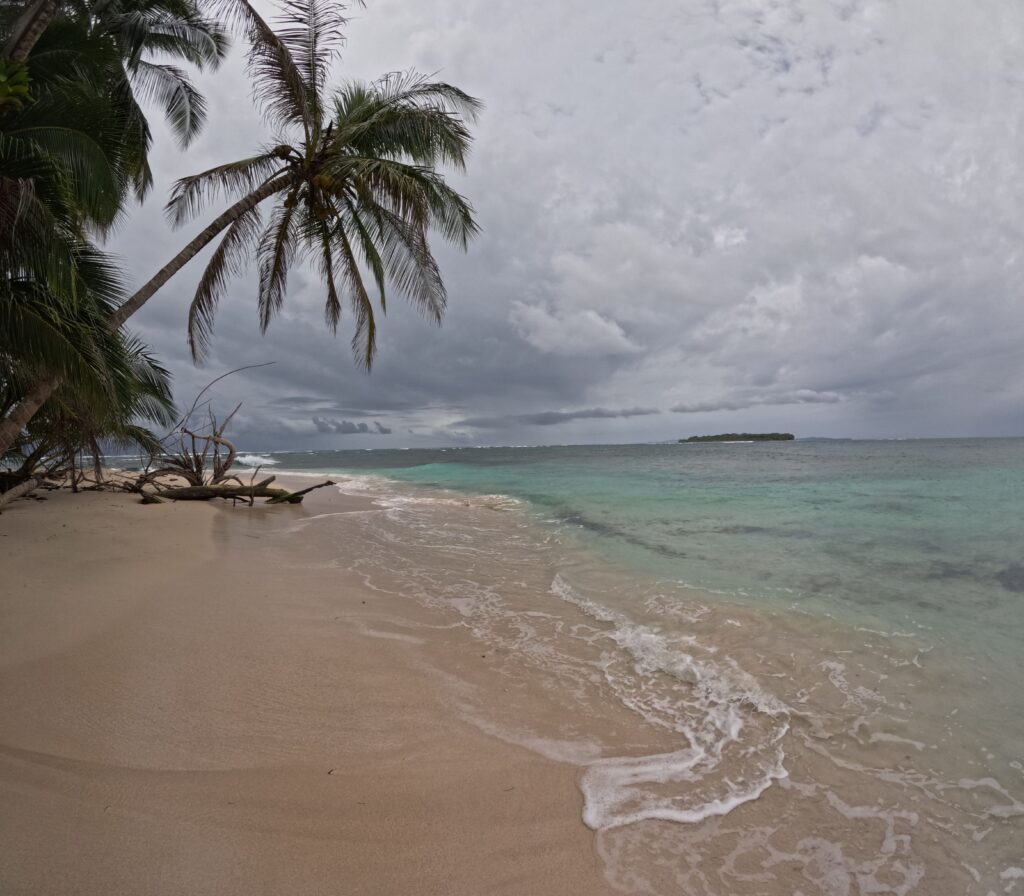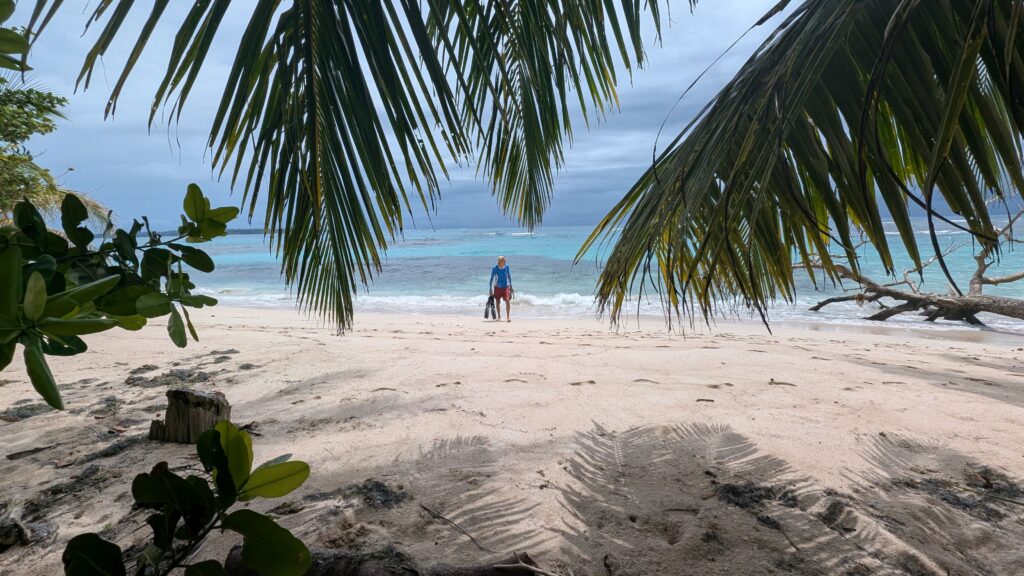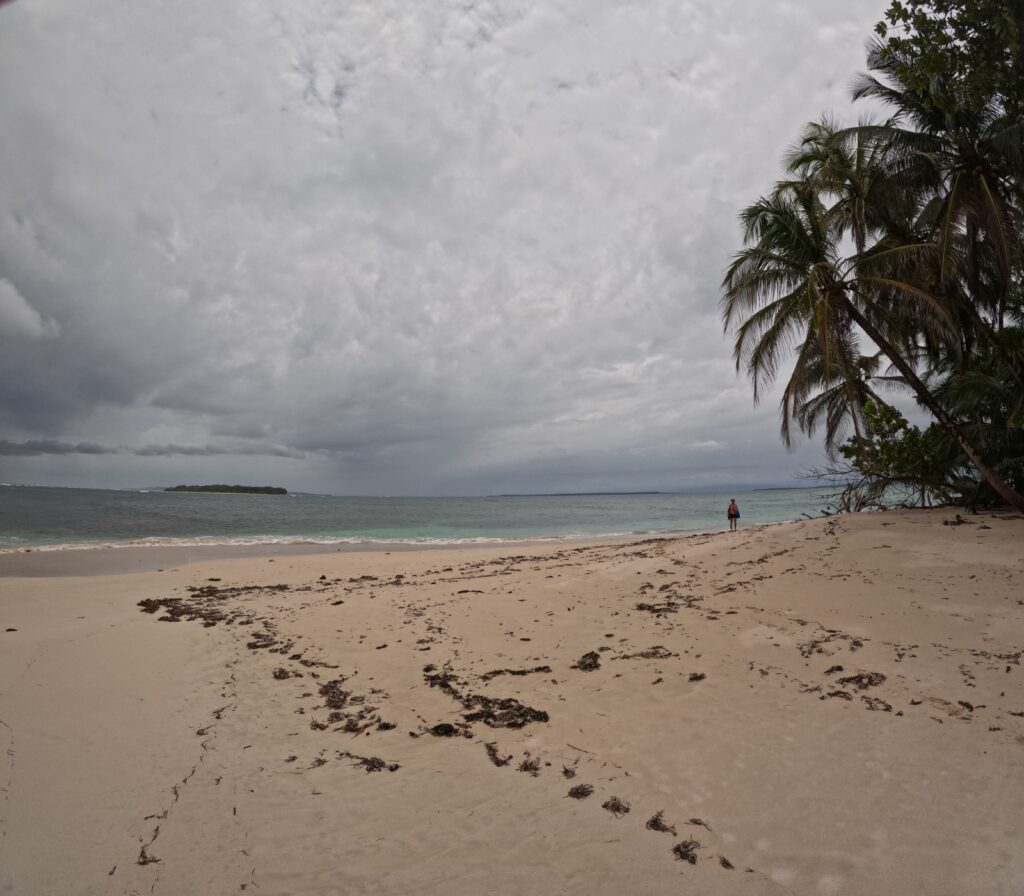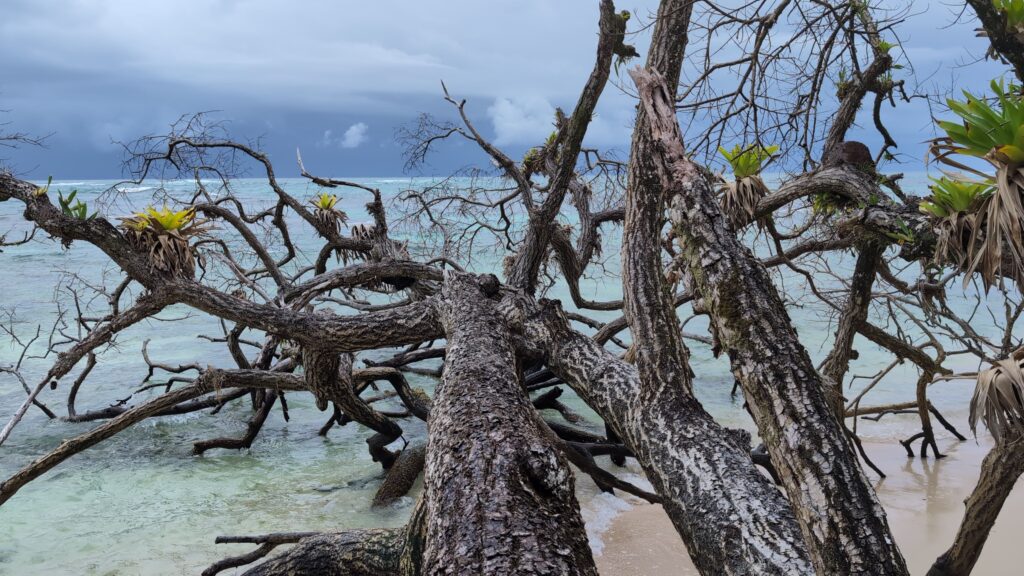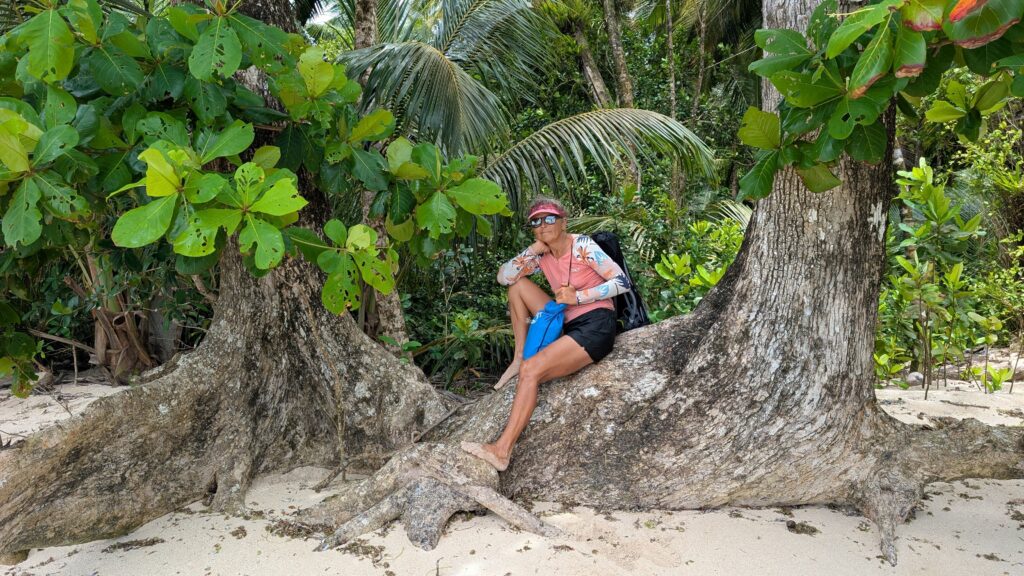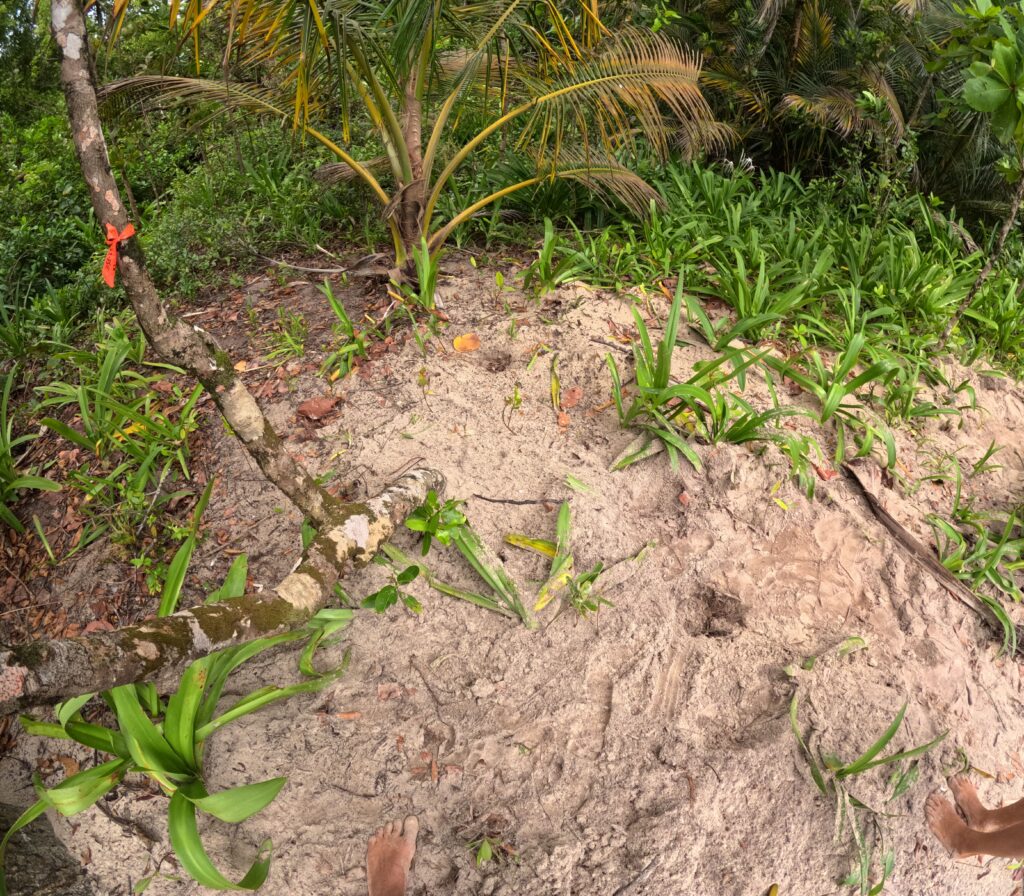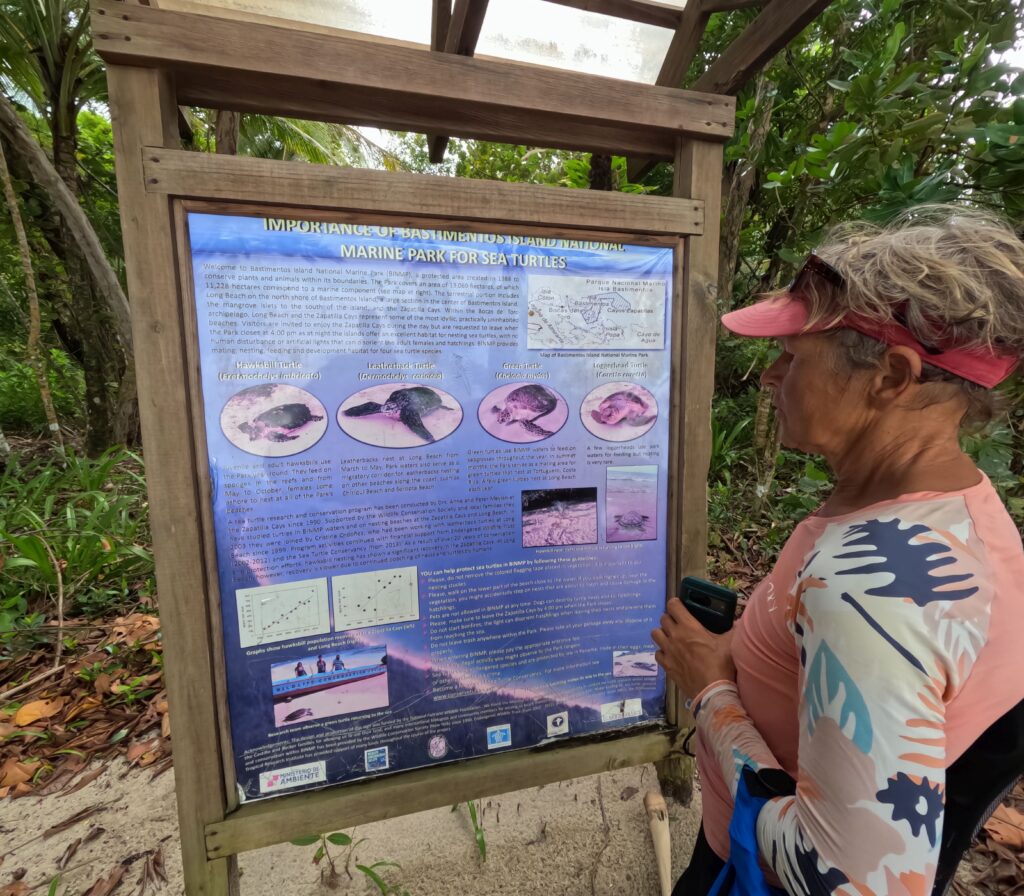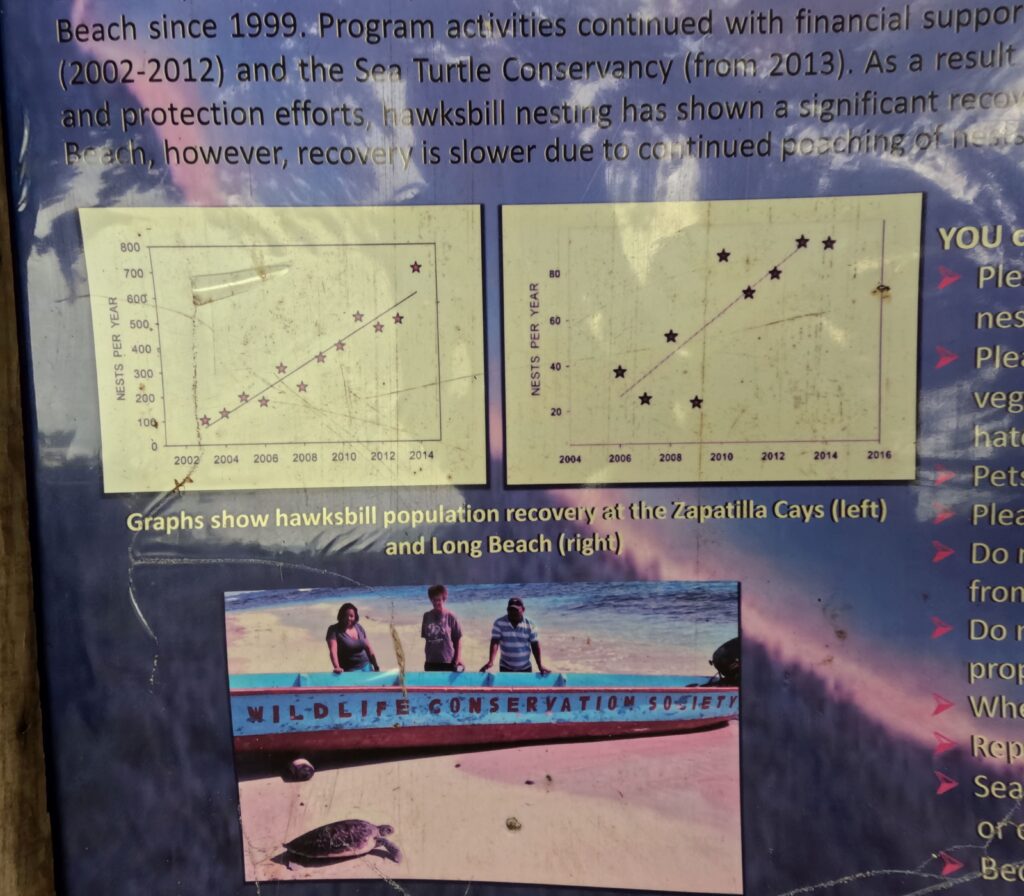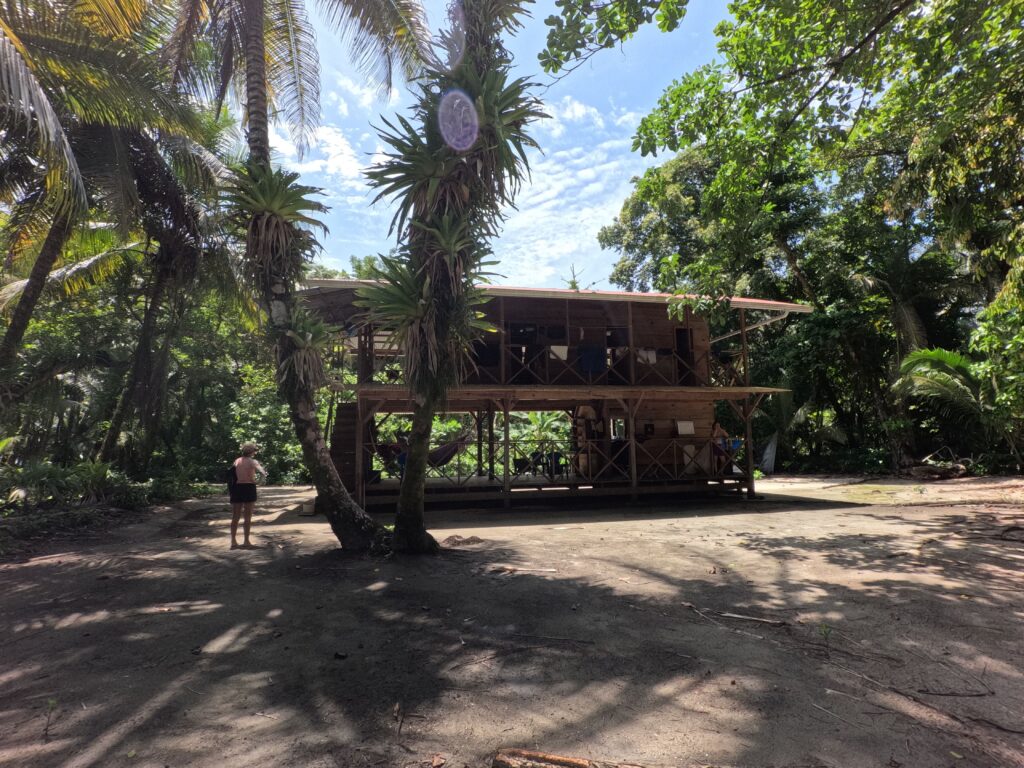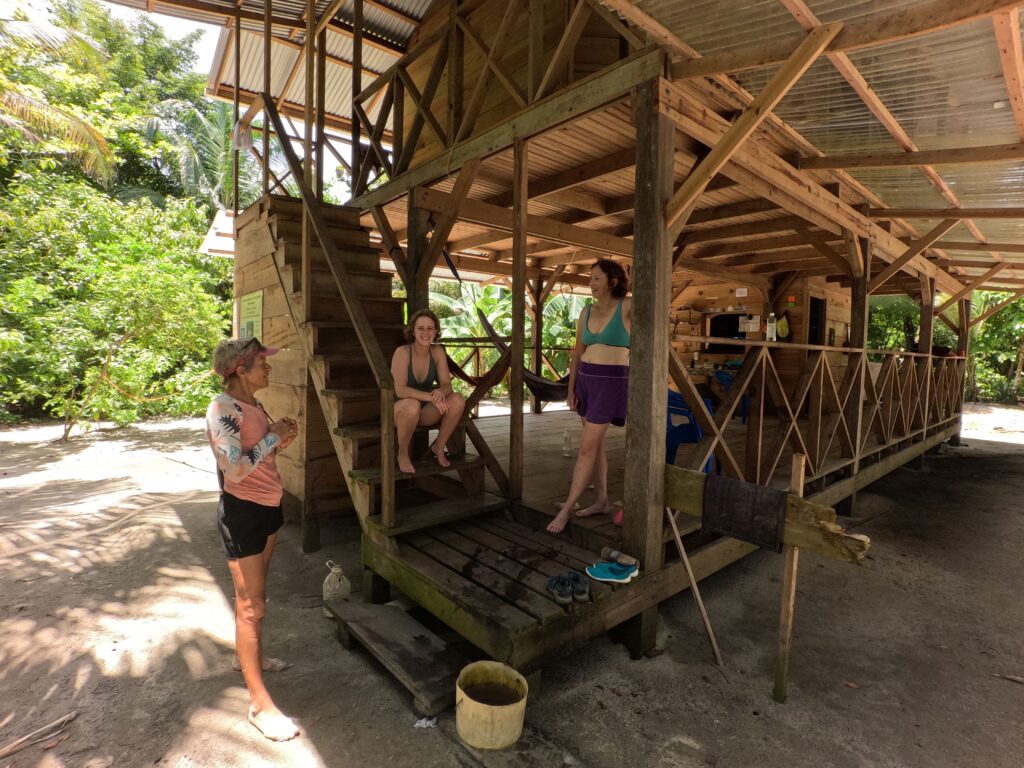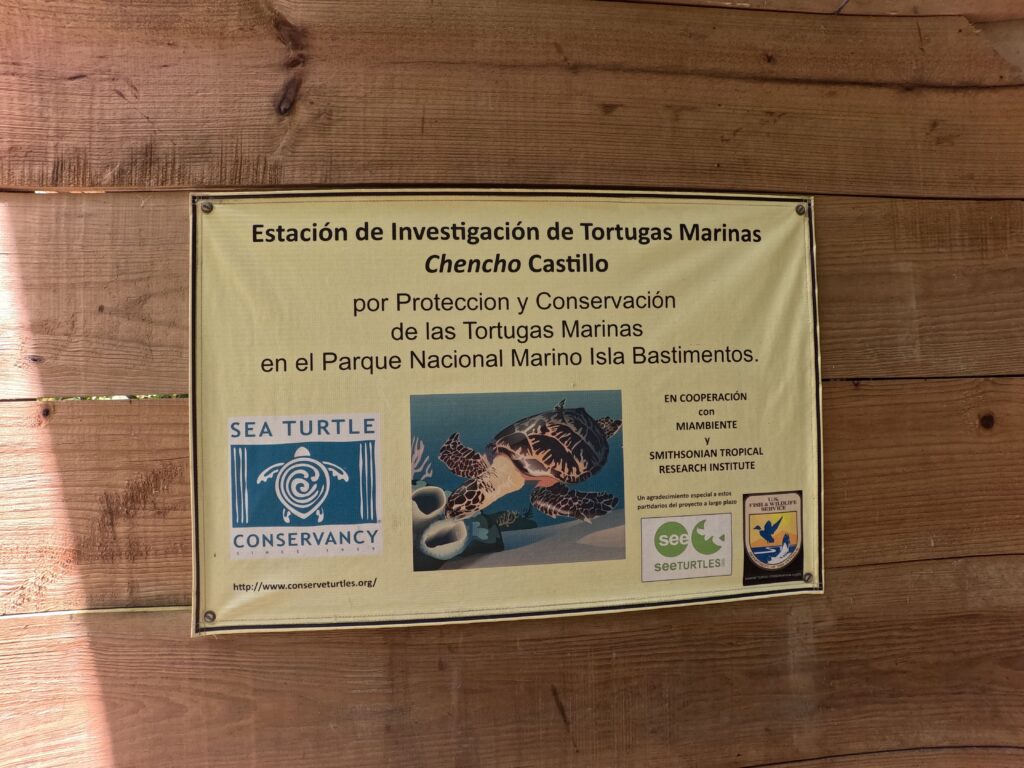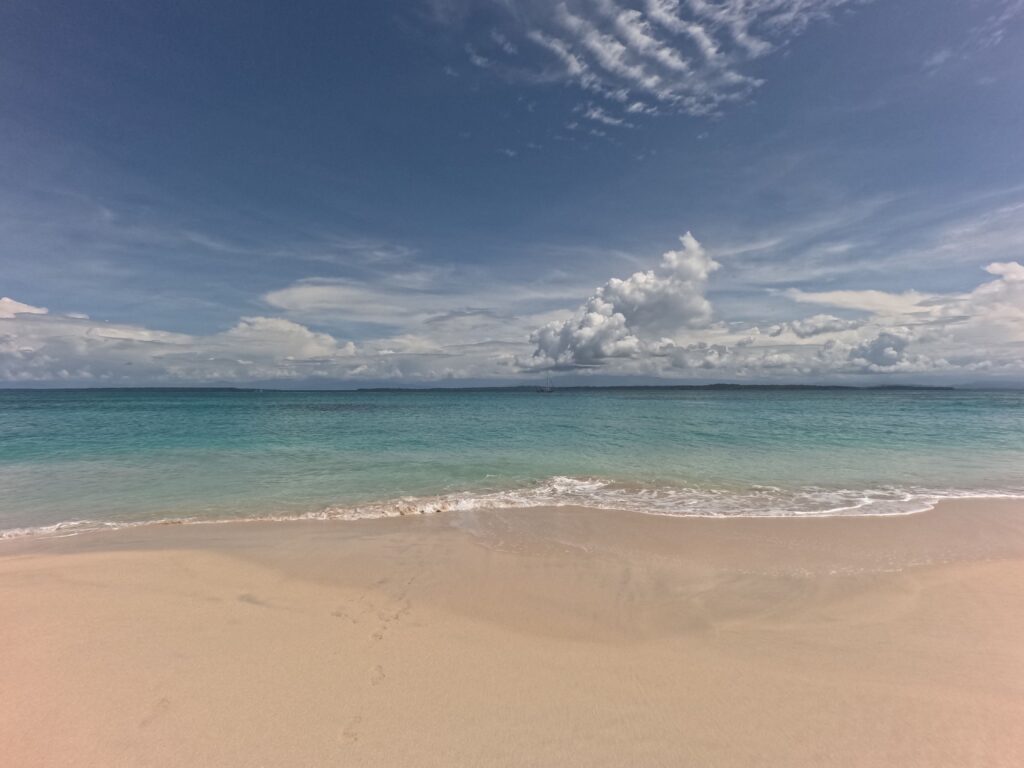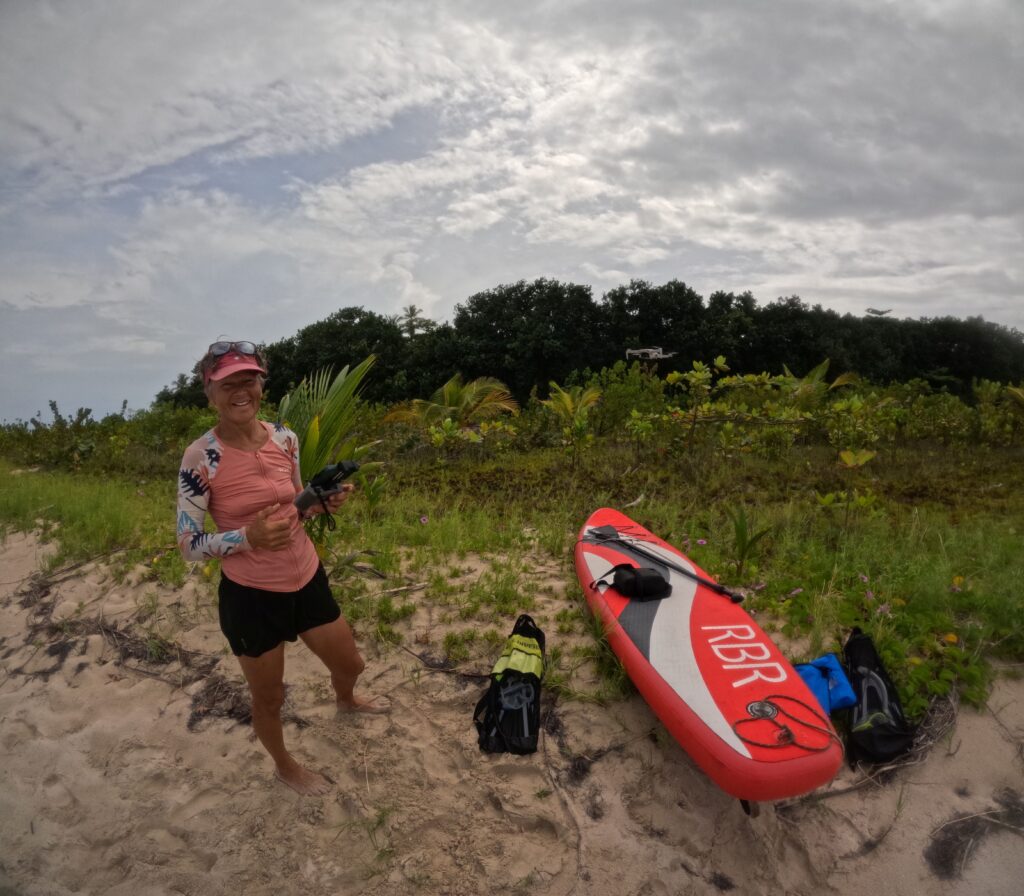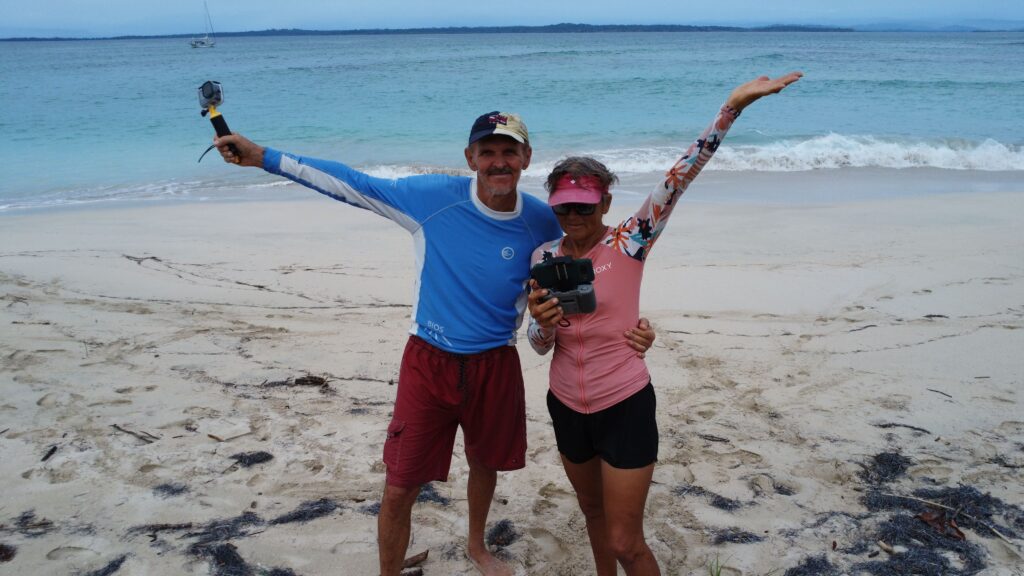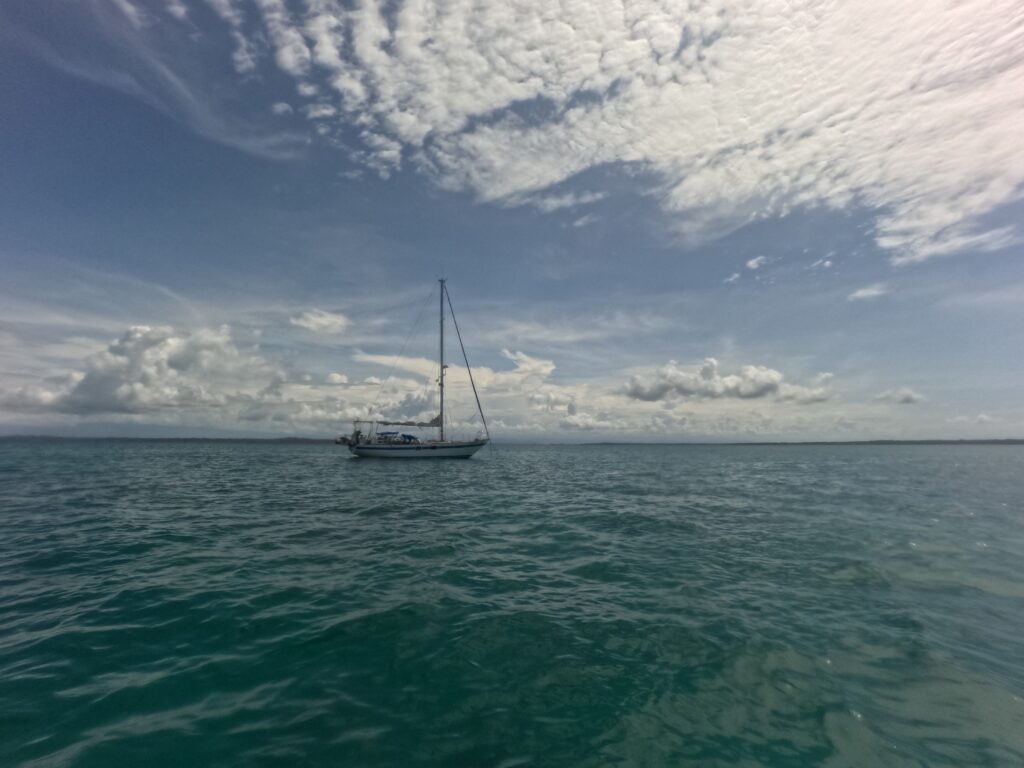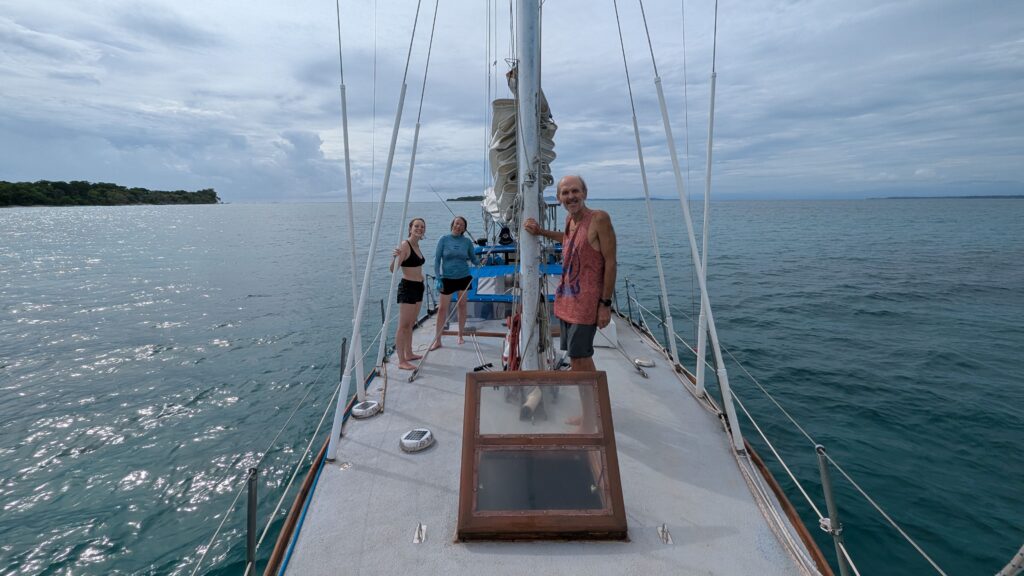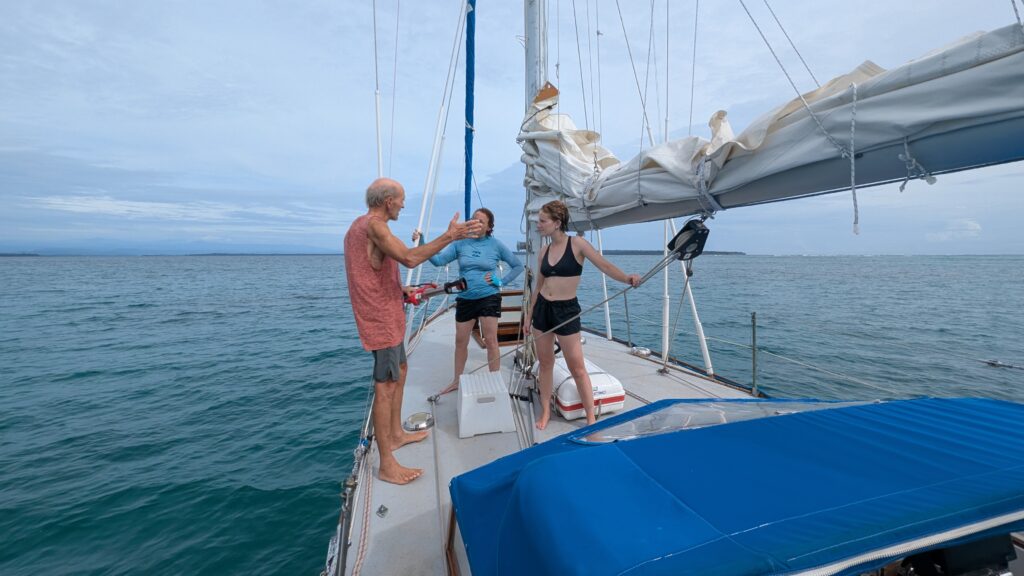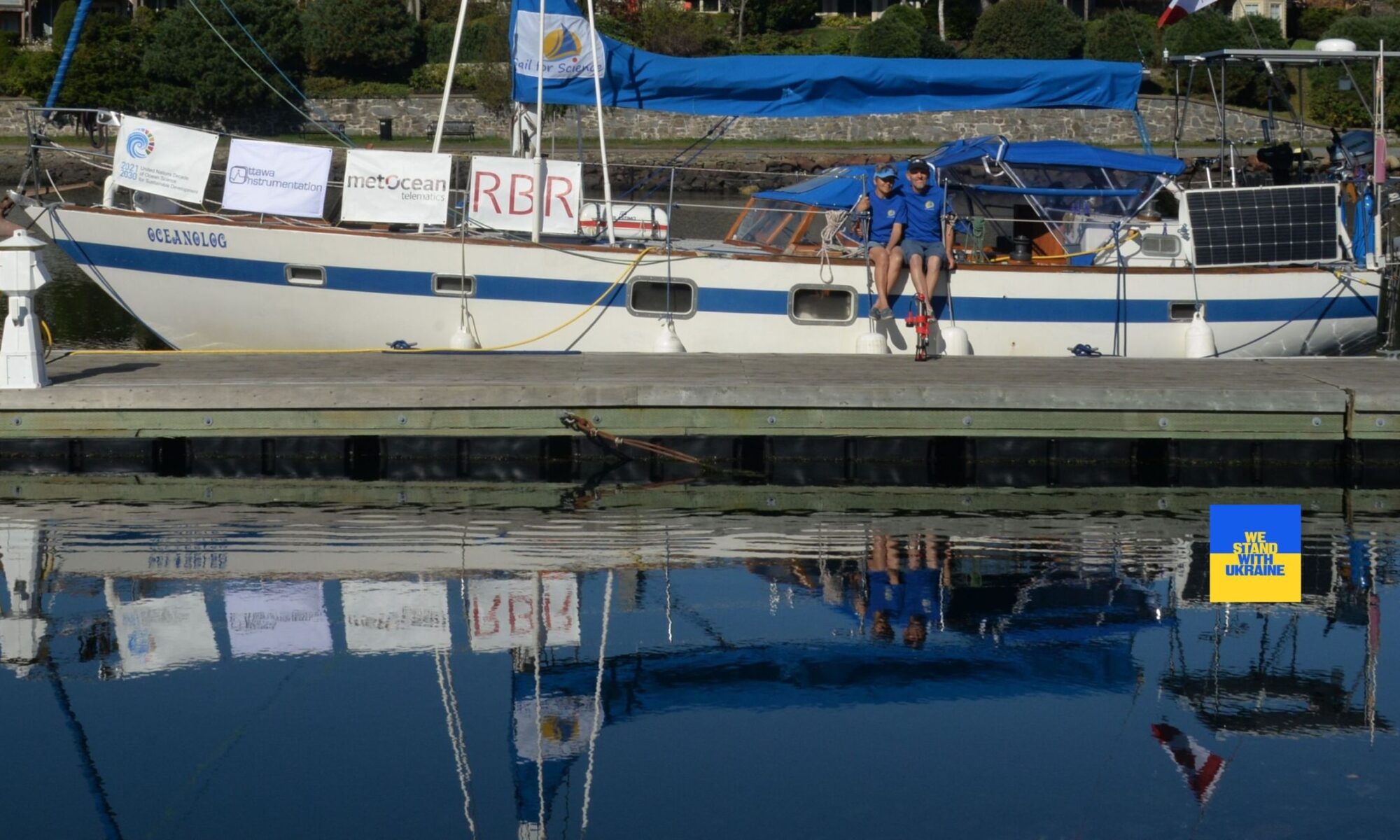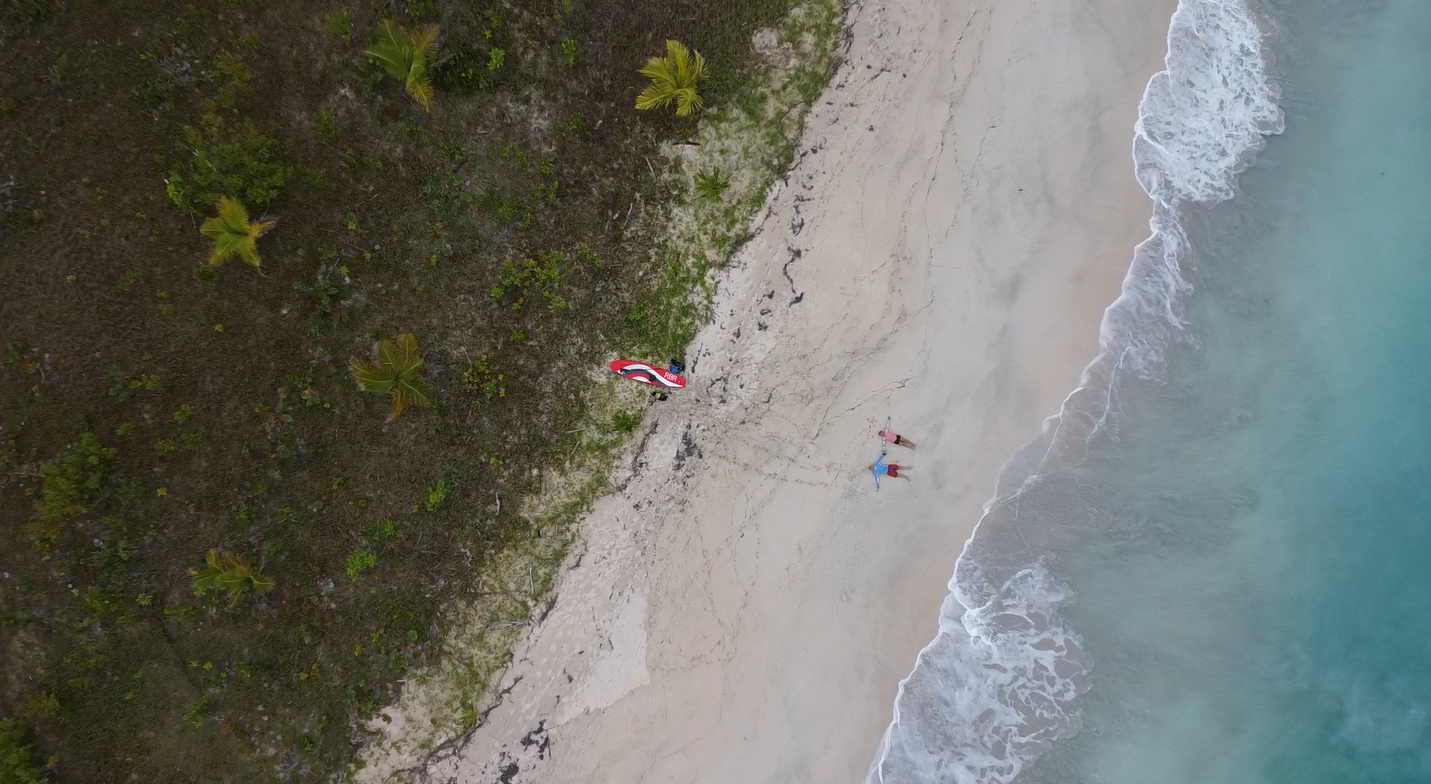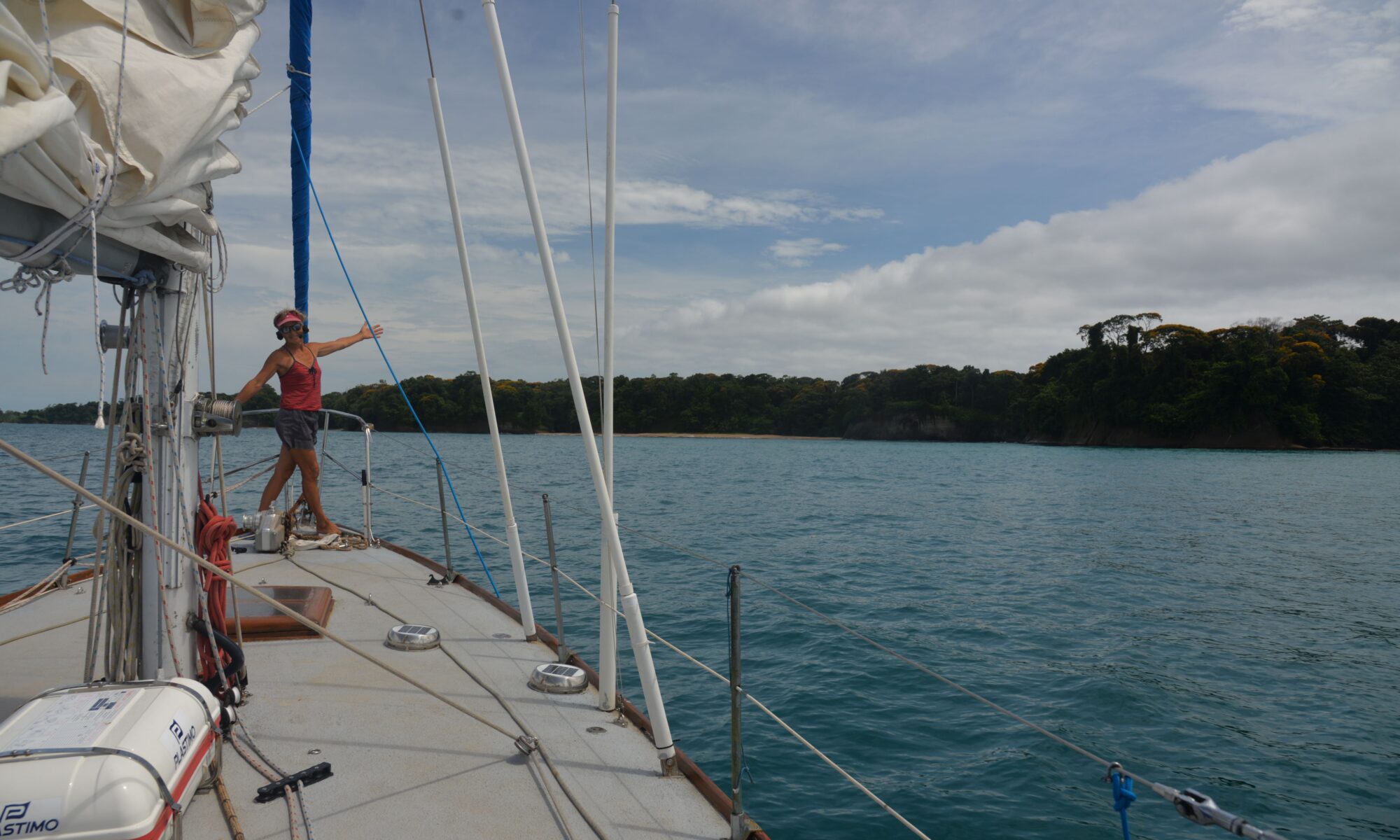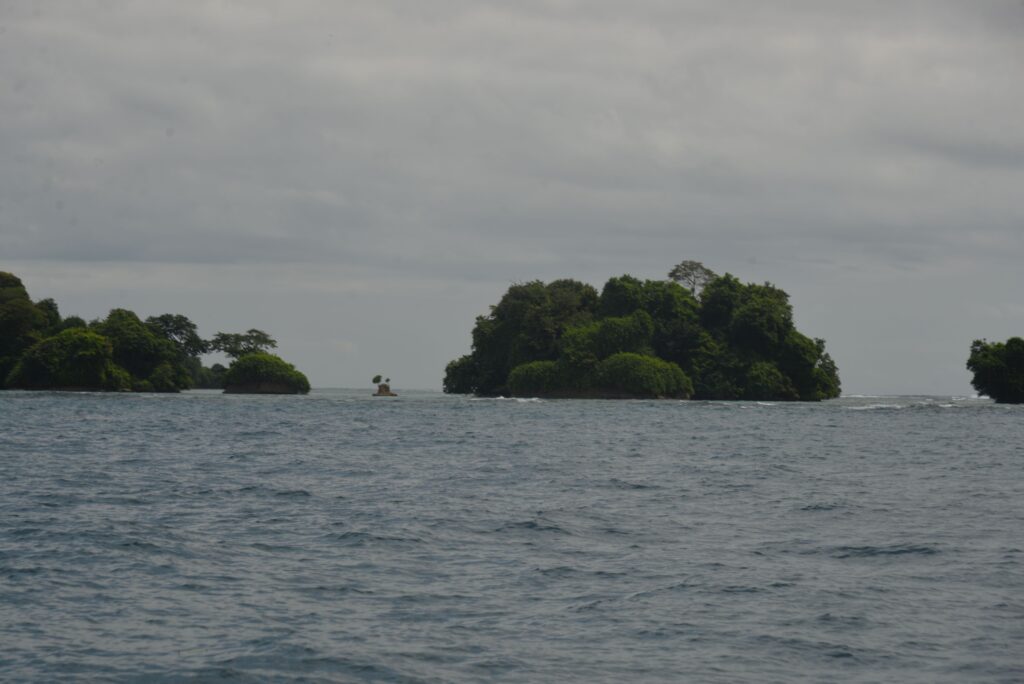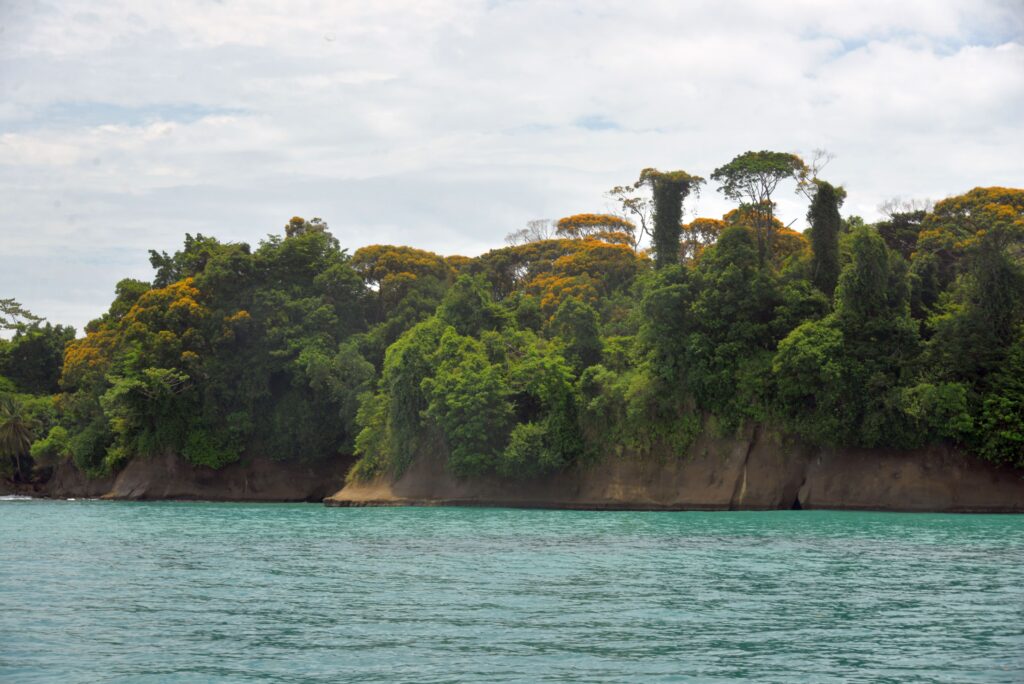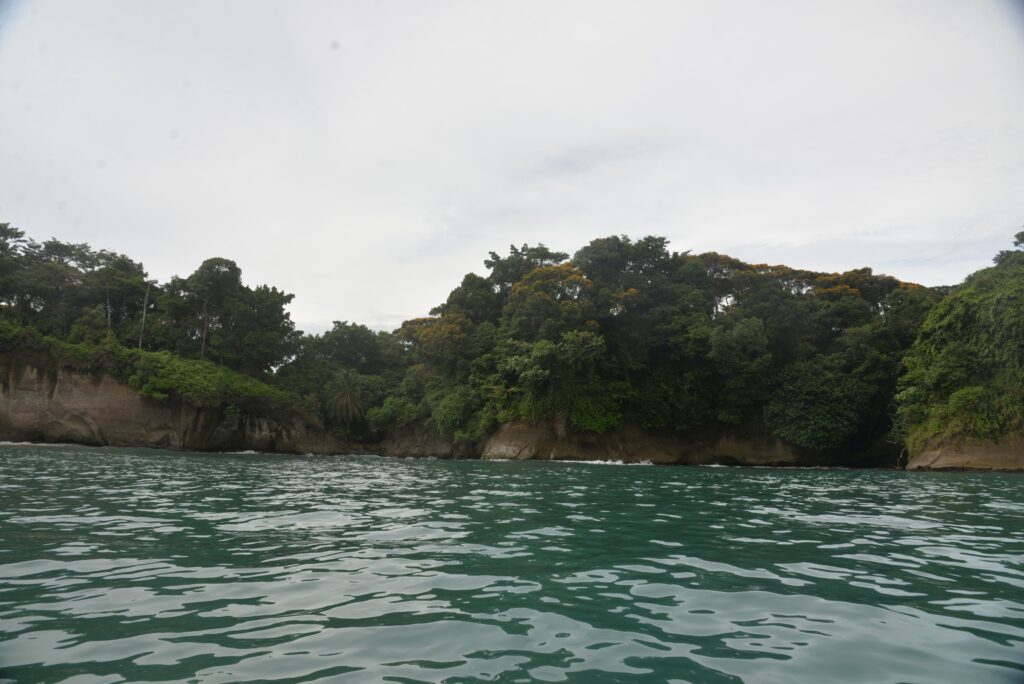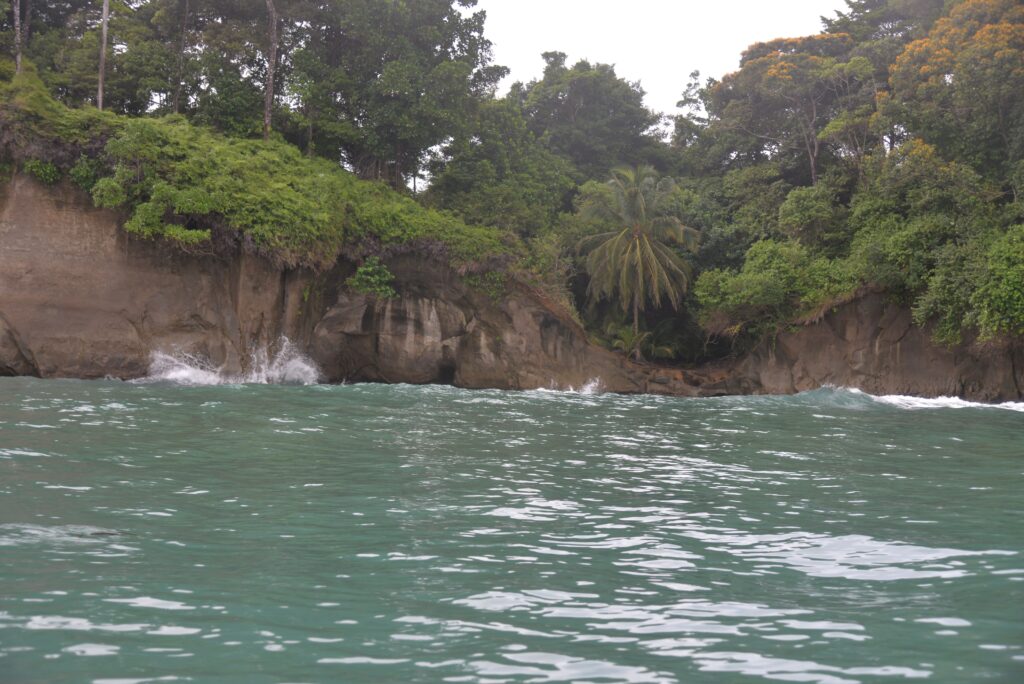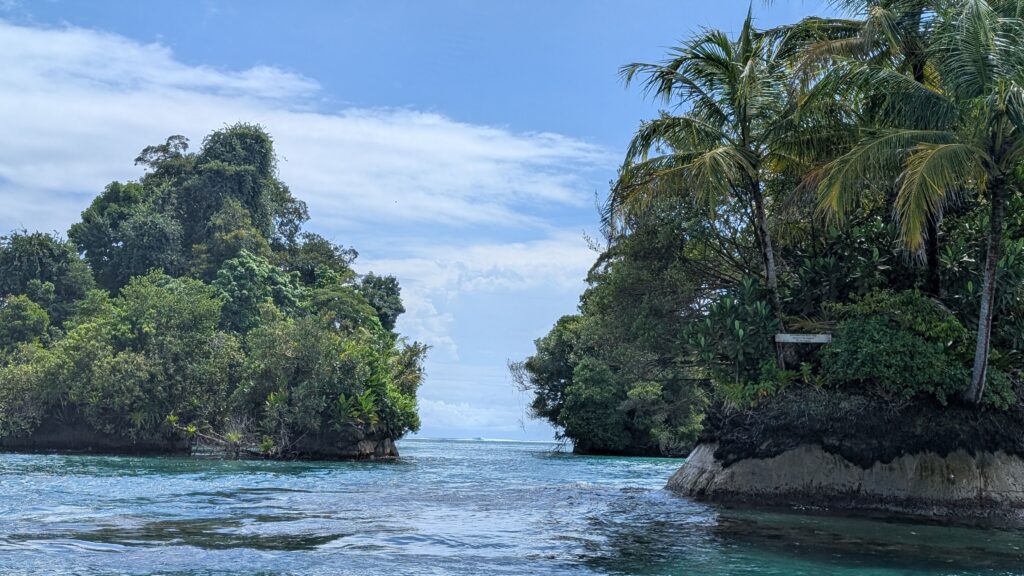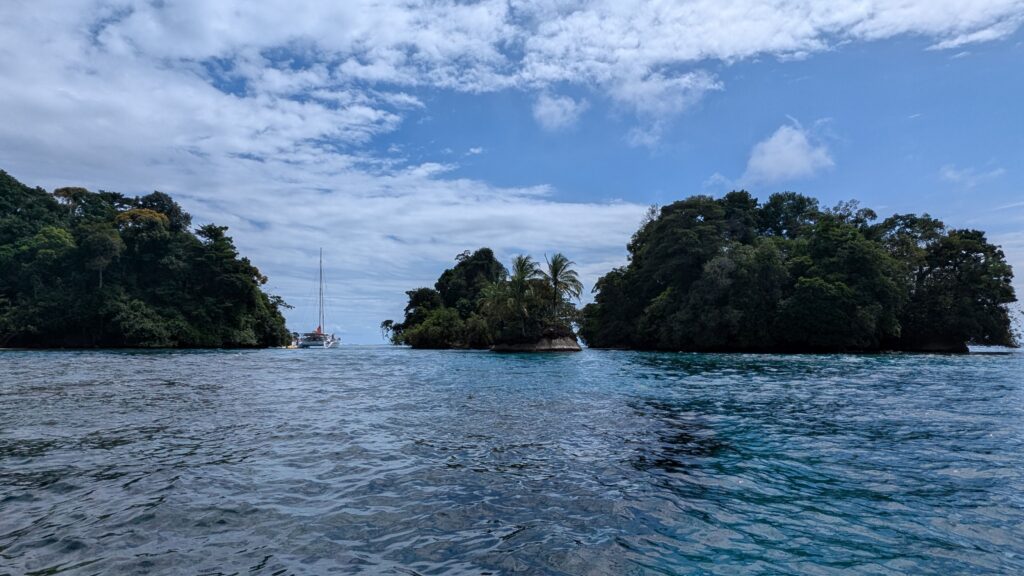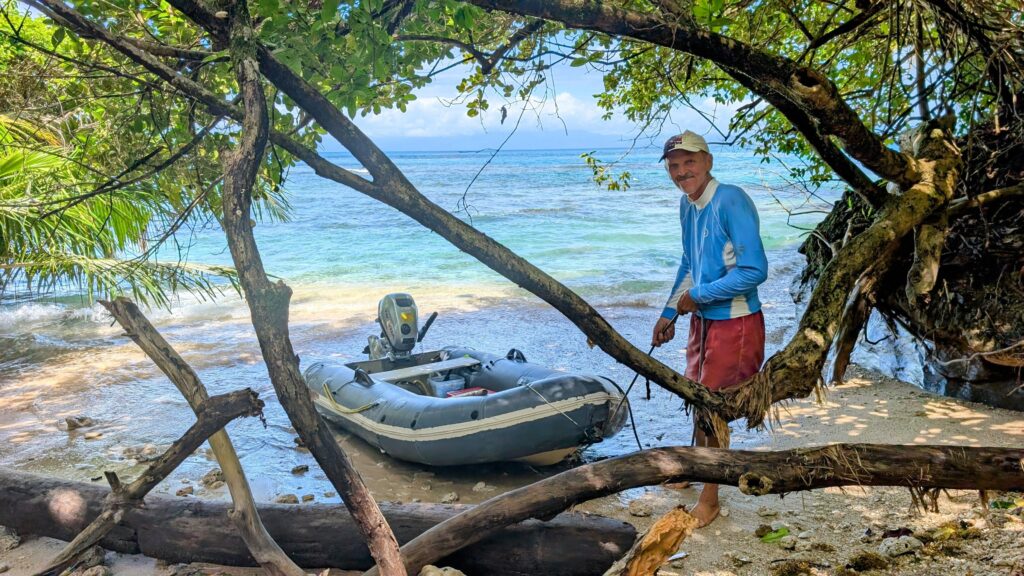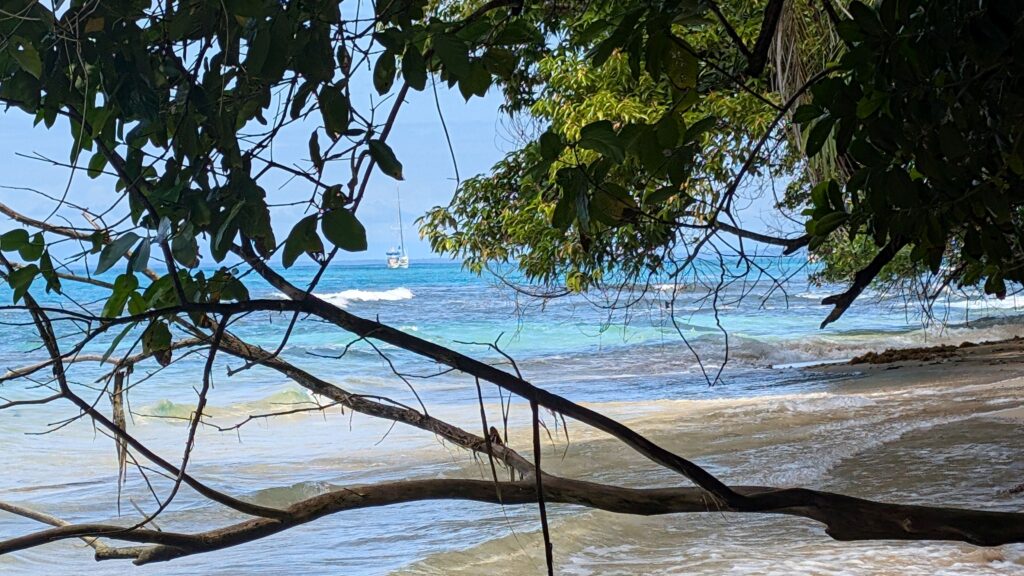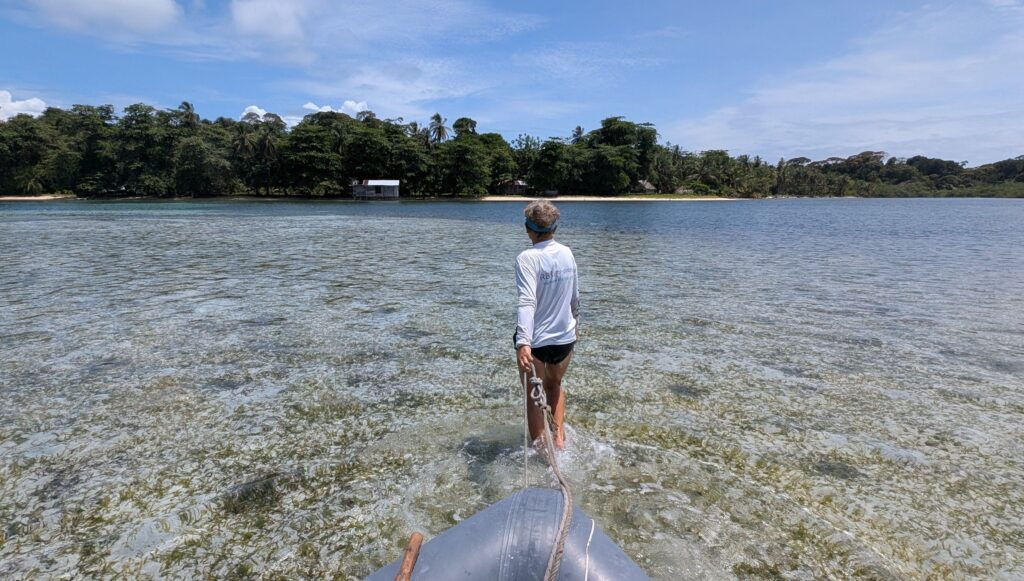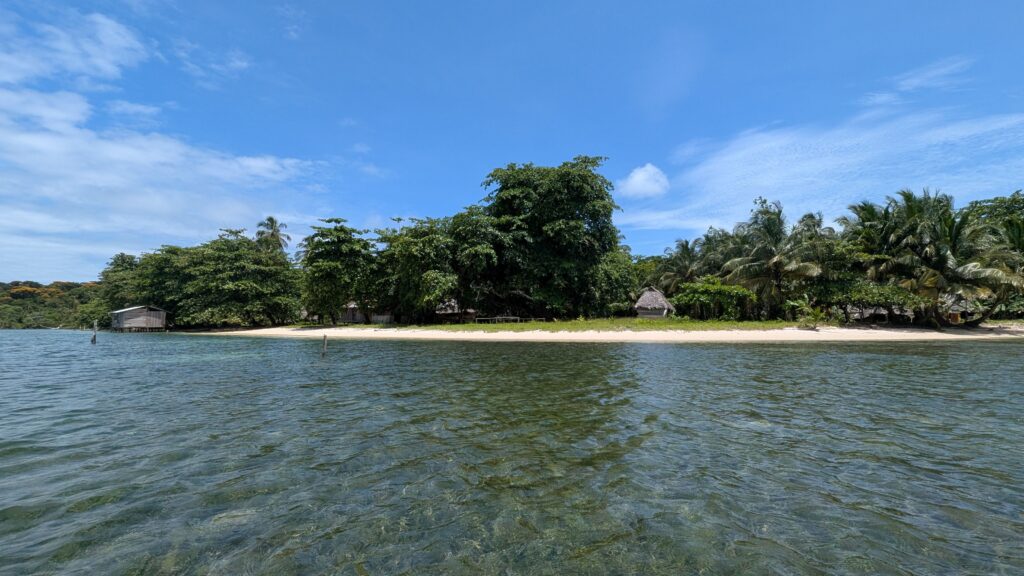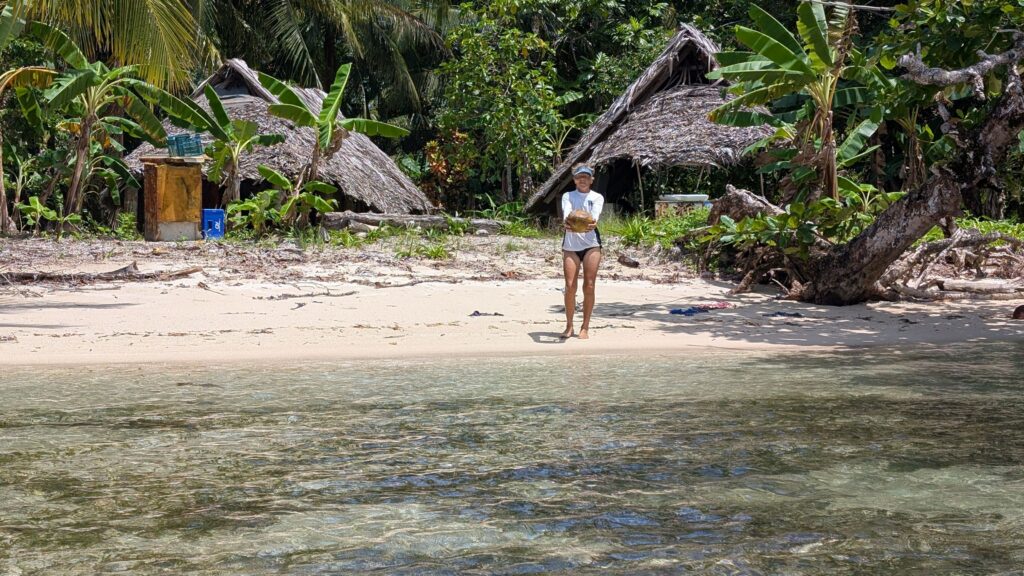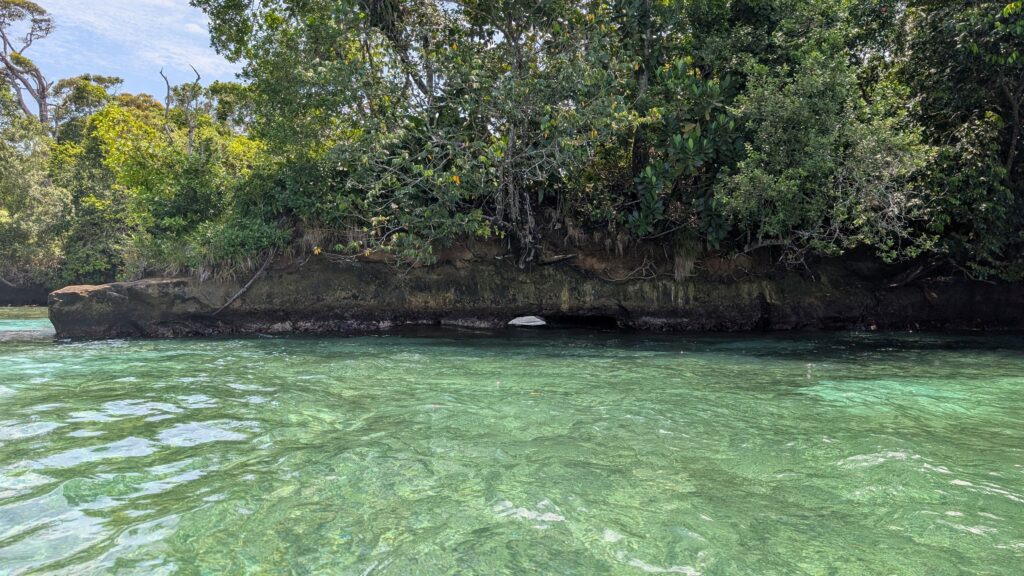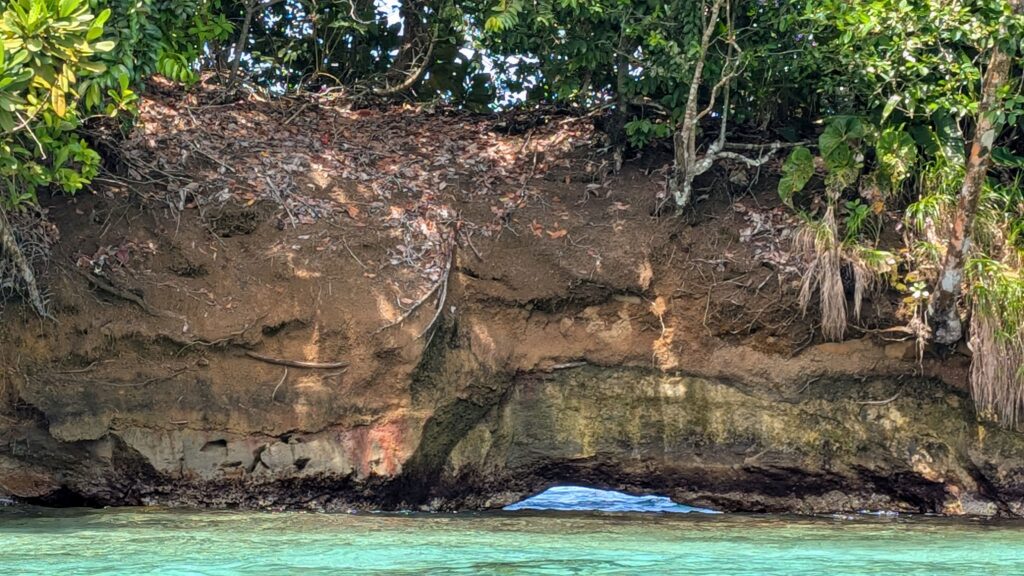Our next stop on the journey to Bocas del Toro was Cayo Zapatilla I—one of two small islands that make up part of Panama’s Bastimentos Island National Marine Park. This protected area was established primarily to conserve critical nesting sites for endangered sea turtles, particularly the hawksbill turtle.
As we approached the island, its white sandy beaches and lush greenery looked like a scene from a postcard. But beneath the beauty lies an important mission: turtle conservation. On shore, we were welcomed by two incredible volunteers, Rita from Portugal and Debbie from Israel. They are part of a rotating team of international volunteers who live on the island in rather Spartan conditions, often for up to five months at a time.
Their days are simple, but their nights are critical—they take turns keeping watch, patrolling the beach in darkness to document nesting turtles, protect the eggs, and mark the nests for monitoring. They are joined by two young local Guna Yala men, but the project has recently suffered a setback: due to a suspension of U.S. funding, many local staff members have lost their jobs, leaving a heavier burden on the shoulders of the volunteers.
Despite the challenges, their commitment is inspiring. These unsung heroes are truly on the front lines of conservation, quietly helping to ensure that future generations of turtles can return to these very beaches to nest.
The next morning, Rita and Debbie swam to visit us aboard SV Oceanolog (our dinghy’s engine was flooded). We welcomed them warmly and shared the story of our own project, Sail for Science, demonstrating our CTD measuring system used to collect oceanographic data across the Caribbean.
This unexpected exchange reminded us of the power of grassroots efforts and international cooperation in protecting our oceans. It’s not only about scientific instruments or government programs—it’s also about people like Rita and Debbie, who dedicate their time and energy to a cause greater than themselves.
We left Cayo Zapatilla humbled and hopeful. Encounters like this reaffirm our belief that collaboration between sailors, scientists, volunteers, and local communities is essential. We hope that more support—both governmental and philanthropic—will flow toward projects like this.
Together, we sail. Together, we protect. Together, we win.
